In the summer of 2023, the Ecology research group of the University of Basel embarked on a six-week field campaign to re-survey historical vegetation data in Svalbard with the core question of how Arctic and alpine plant distributions respond to environmental change.
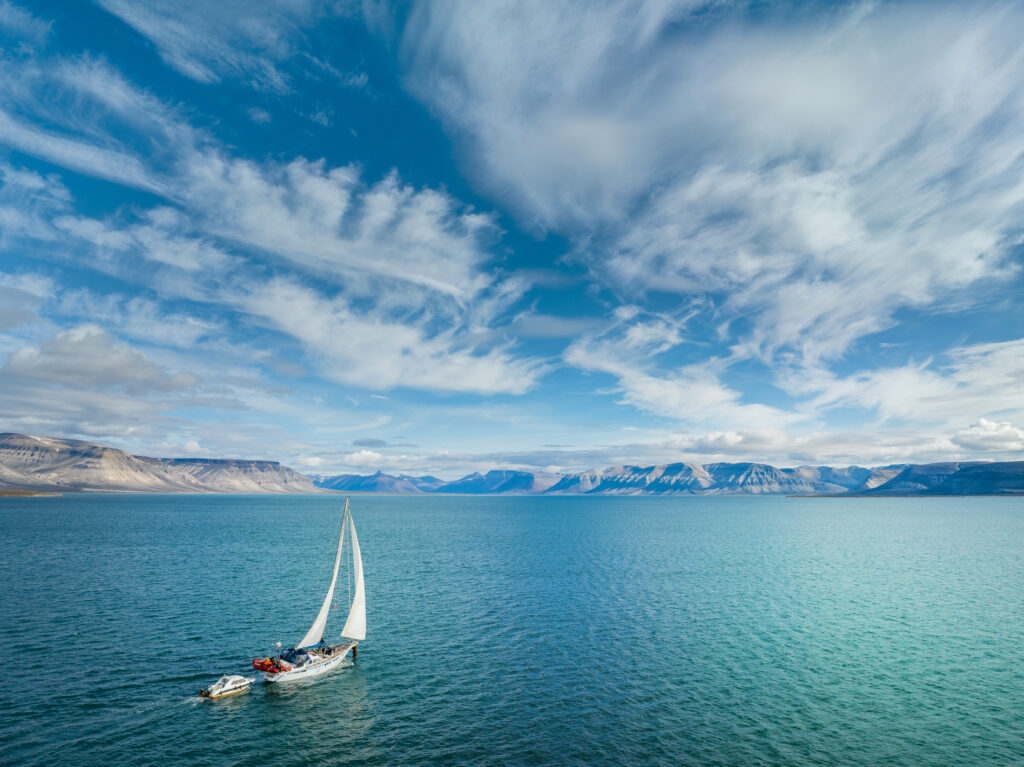
Scientific background: Arctic and alpine plant responses to environmental change
Arctic and alpine ecosystems are disproportionately affected by climate change with warming trends outpacing the global average. Plant species shift their ranges to higher elevations and latitudes to track the environmental conditions they are adapted to, but the majority seems to lag behind warming trends. Whether the velocity of these range shifts is increasing with accelerating climate warming and whether the distributions of Arctic and alpine plant species are increasingly lagging behind climate change remains unknown. If lags were to increase over time, they might in the long run become too large to overcome, and ultimately result in species extinctions. In addition, the Earth is currently facing more environmental changes than global warming alone. Other aspects, such as changes in precipitation, snow cover and atmospheric nitrogen deposits might additionally contribute to species’ range shifts and their lag dynamics. Their individual contributions and intervening effects remain so far, however, poorly understood.
The major reason for these knowledge gaps is the lack of data with multiple observations over time that span the complete environmental gradients of alpine and Arctic plant species. Together with a multitude of colleagues from all over Europe, we establish a new re-survey data base that comprises vegetation data from European Arctic and alpine ecosystems with multiple observations since 1850. In this project, we are filling the high-Arctic gap in this database. Between 1924 and 1960, three expeditions surveyed 186 vegetation plots and elevational transects on seven summits across the Isfjorden in Svalbard. These sites were re-located and re-surveyed in 2009 by a Norwegian team around Jutta Kapfer and John-Arvid Grytnes. During our field campaign in 2023, we extended this timeline by a third re-survey in collaboration with Philipp Semenchuk from the University Centre in Svalbard.
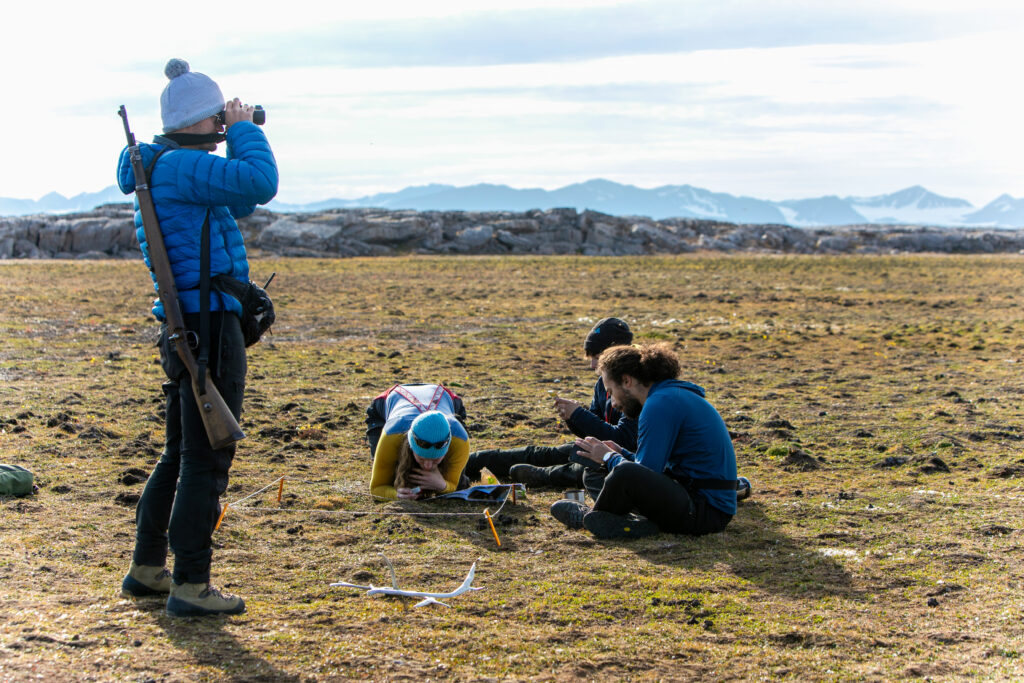
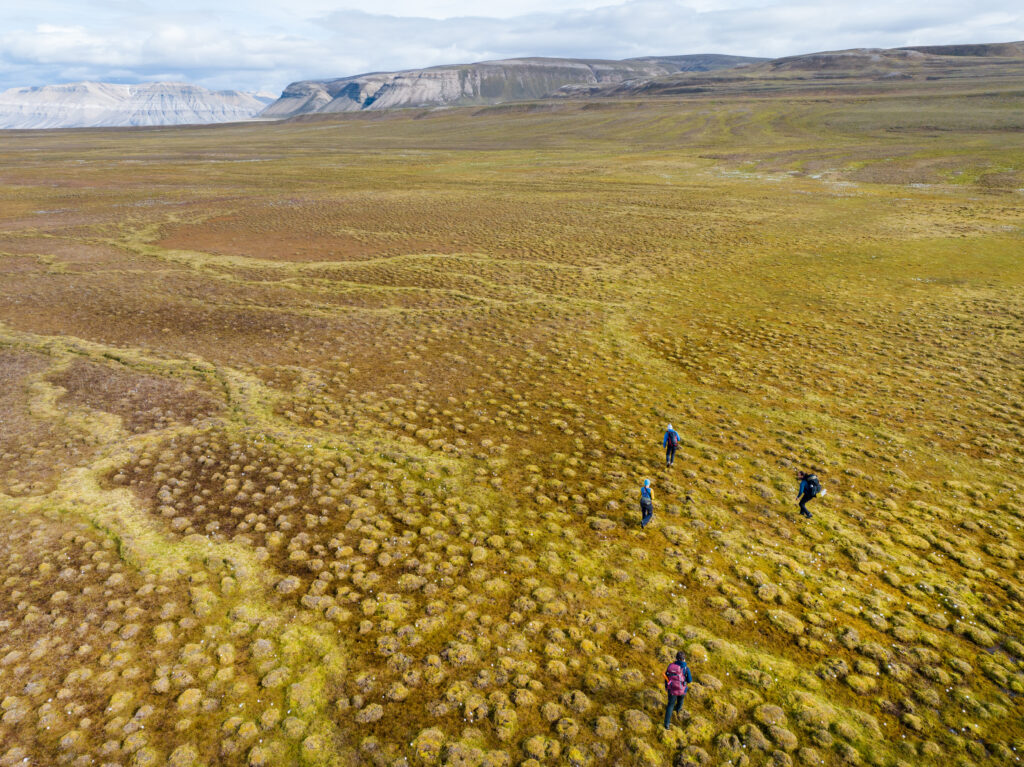
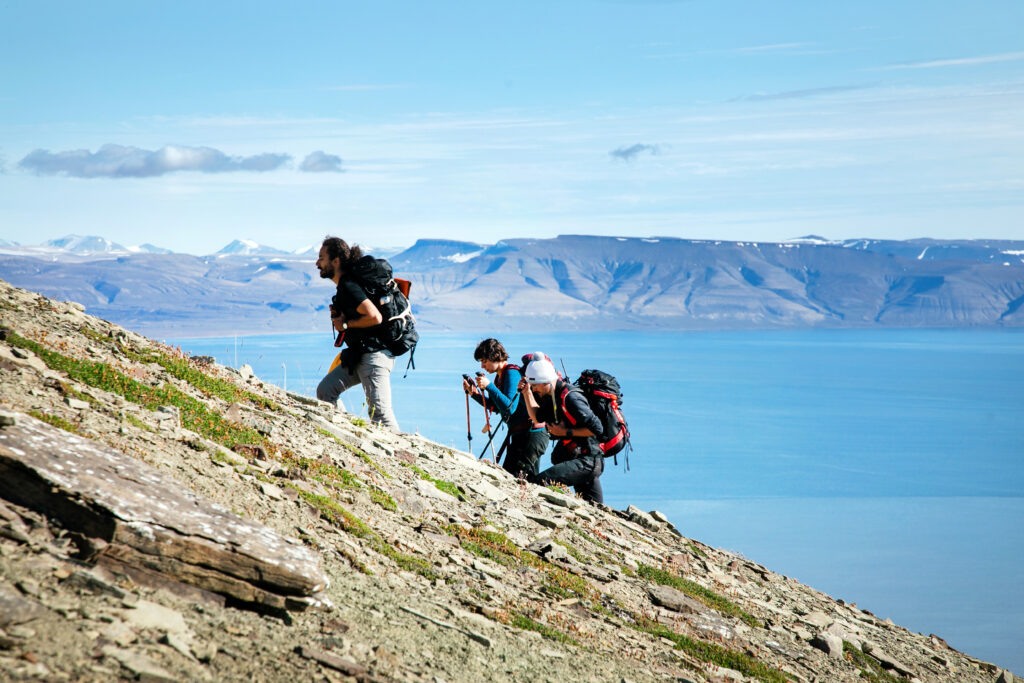
© 2023 Marcel Schutz, University of Basel, all rights reserved
Fieldwork: The Nanuk experience
Our fieldwork was characterised by unique transportation and housing— the Nanuk, a chartered sailboat that offered climate-friendly accessibility to field sites and planning flexibility. Mornings saw us setting sail to our destinations, conducting vegetation surveys either by ascending mountains or staying closer to shore at the designated plots, depending on our daily objectives. Mountain climbs were collaborative efforts, with everyone engaged in spotting individuals of plant species while maintaining a vigilant watch for polar bears in the area. On plot-based survey days, roles rotated. One person was constantly on bear watch while the rest of the team focused on botany – in the typical botanist’s position with the face close to the ground to not miss even the smallest plants. Evenings brought us back to the Nanuk for shared warm meals and the luxury of a hot shower.
This project was a team effort and wouldn’t have been possible without the support of Jutta Kapfer, John-Arvid Grytnes and Philipp Semenchuk. Special thanks go to the skipper of the Nanuk, Peter Schurke, and the field crew Sophie Weides, Raphael von Büren, Hakîm Schepis, Christian Kuehs, and Maya Schrödl.
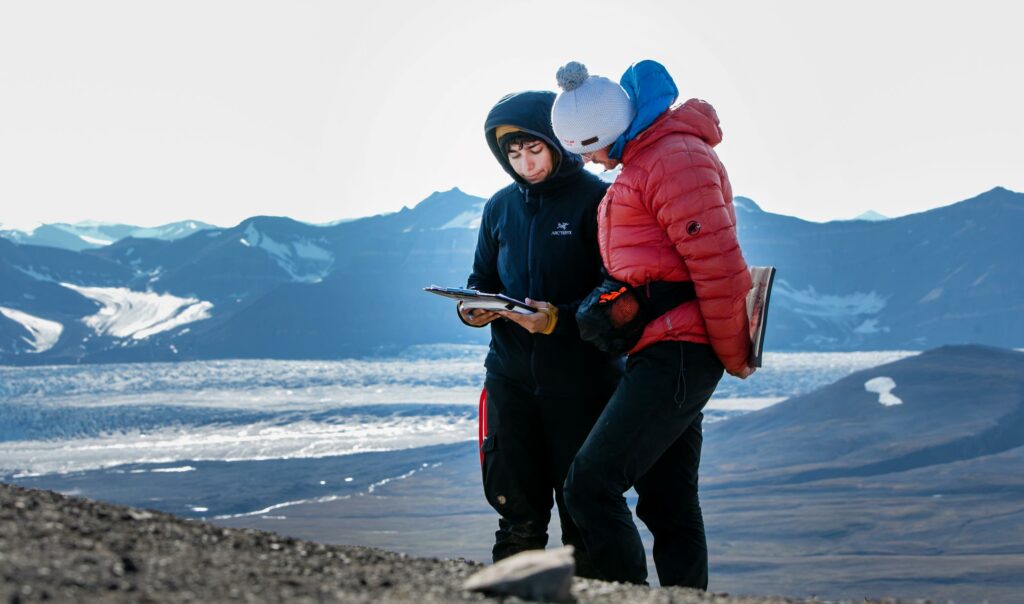
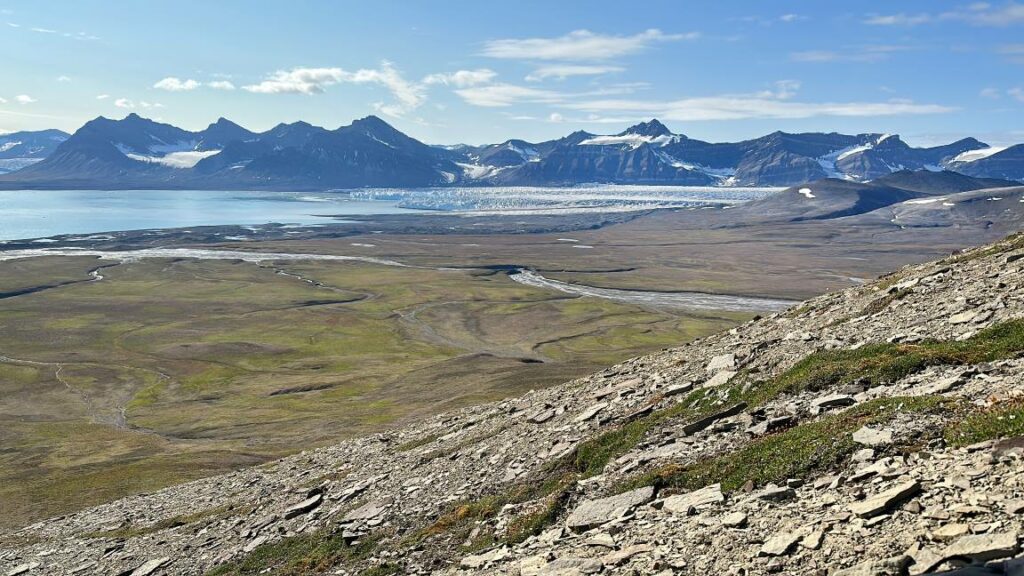
Sabine Rumpf is Professor at the Department of Environmental Sciences at University of Basel. Her field trip took place during summer 2023 with the financial support of an SPI Exploratory Grant.